Parking Lot Bumpers Made from Different Materials
The parking bumpers are a crucial element to consider when creating a safe and organized parking lot. These barriers, also known as parking blocks or wheel stops, prevent cars from encroaching on sidewalks, landscaping, or other areas they should not be in.
But what materials are the best for parking lot bumpers?
In this article, you’ll take a closer look at the options available, their pros and cons, and what factors to consider when choosing.
So, let’s get started.
For more information, feel free to discover here: All You Need to Know About Parking Blocks.
Rubber
Parking lot bumpers are usually made of rubber, one of the most popular materials. As well as being durable, flexible, and resistant to weather and chemicals, it is also environmentally friendly. It is also relatively easy to install and maintain rubber bumpers. This is because they are easy to clean and repair if damaged over time.
An alternative to traditional rubber parking bumpers is rubber-plastic parking bumpers. These parking bumpers are made from a combination of rubber and plastic and offer many of the same benefits as rubber alone. They are also lightweight and easy to attach, making them an excellent option for driveways and parking garages with limited space.
Another option for added visibility and safety is to use reflector strips on the parking bumpers. Reflectors can be added to the parking bumpers to increase visibility and prevent accidents in low-light situations. Reflectors can be added to any type of parking stop, including rubber, rubber-plastic, concrete, and steel.
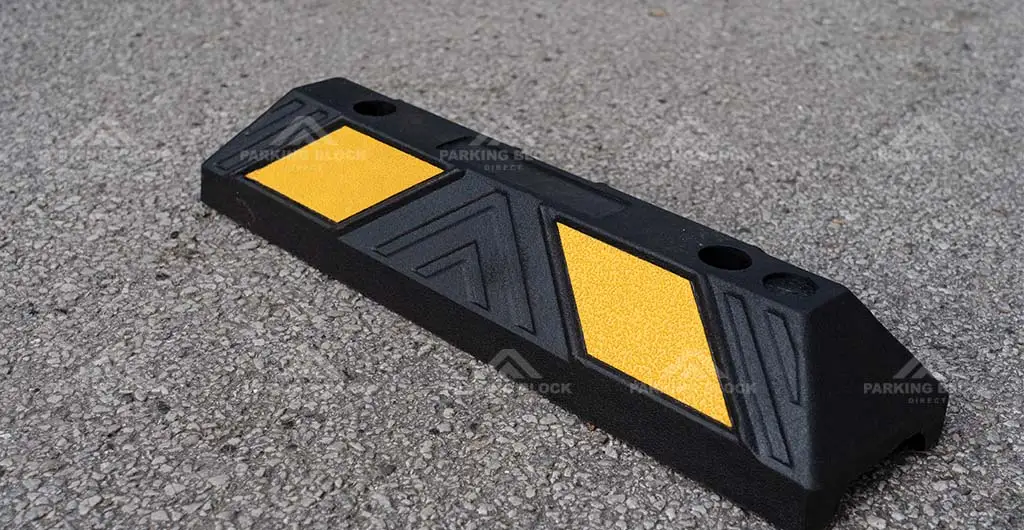
Plastic-Rubber composite
In addition to rubber parking bumpers, a combination of rubber and plastic parking bumpers is also a popular choice. This material can also have many benefits associated with rubber alone, but it is usually more affordable than rubber alone. The combination of rubber and plastic also makes them waterproof, which is an added advantage when parking in areas prone to heavy rainfall or flooding.
These parking bumpers are designed to protect parked cars from collisions and scratches, making them ideal for parallel parking, street parking, and other types of parking. The lightweight and easy-to-install nature of Plastic-Rubber composited parking curbs make them an excellent choice for small parking spots and are also suitable for indoor parking spaces.
Regarding car protectors, Plastic-Rubber composited parking stops are the best option, as they are lightweight, easy to install, and more affordable than other materials.
Regarding cost, Plastic-Rubber composited parking blocks are generally more affordable than rubber parking blocks. These wheel stops are designed to protect parked cars from collisions, scratches, and other damages, making them ideal for parallel parking, street parking, indoor parking space, and different types of parking.
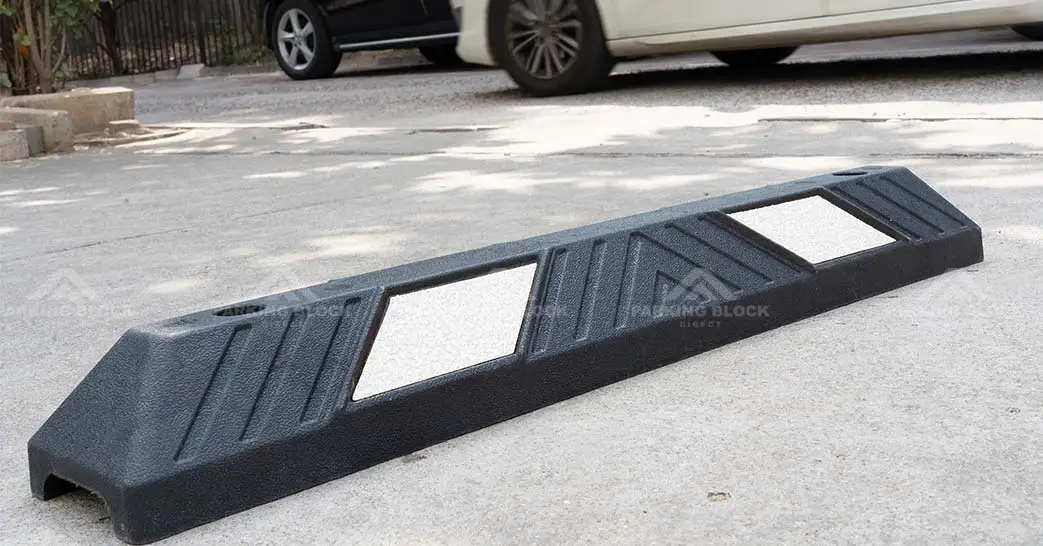
If you want to know more about this topic, feel free to discover here: Plastic-Rubber Composite Parking Blocks.
Concrete
Parking lot stops are also commonly made from concrete, which is another material that is commonly used. In addition to being strong, durable, and long-lasting, it can also be poured in various shapes and sizes to fit well in any parking lot, no matter what it is.
Despite this, concrete wheel stoppers can be heavy and difficult to install, and they can also be prone to cracking and chipping in extreme weather conditions as they are heavy and difficult to install. Moreover, if concrete wheel stops remain in good condition for a long time, they will require regular maintenance.
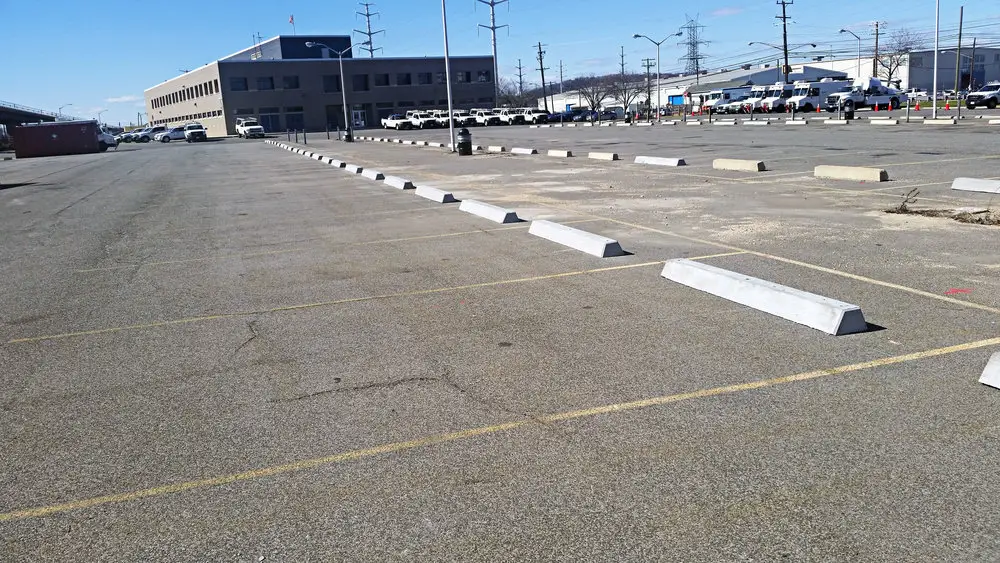
Cement
Regarding parking garages, durable and robust material like cement is ideal. Unlike traditional concrete, cement is more flexible, lighter, and easier to work with, making it perfect for small parking areas or tight spaces.
To promote sustainability, many suppliers use recycled materials in their construction.
Precast concrete solutions are also available for creating solid yet flexible car parking bumpers. Regular maintenance is still necessary to keep these wheel stoppers in top condition, but the benefits of using cement far outweigh the effort required for upkeep.
FEEL FREE TO CONTACT US
OUR FACTORY
Parking Block Direct is a well-known wheel stop manufacturing company located in Qingdao.
Since 2013, we have produced and distributed premium-quality products across different countries to help people improve vehicular and pedestrian safety in public parking lots and garages.
OUR WORLDWIDE DELIVERY
We ship our products in reliable packing worldwide. We ensure our products are delivered to your doorstep in the best possible condition for your public parking garage.
No matter where you live, contact us and learn about the shipping process, delivery date, or any other questions.
Steel
Suppose you’re looking for a challenging and durable solution for parking lot bumpers. In that case, a steel wheel stop provides superior protection and is available in various color schemes to match your needs. While it may be more expensive than other materials, it’s a high-quality product with easy installation and maintenance.
However, it’s essential to consider that steel can corrode and rust over time, impacting its overall effectiveness as a parking curb. To address this, consider using recycled plastic molding for protection and a flexible-foam wrap around for added durability.
In addition, installing steel parking bumpers at crosswalks helps to ensure pedestrian safety and can provide the most formidable barrier available on the market.
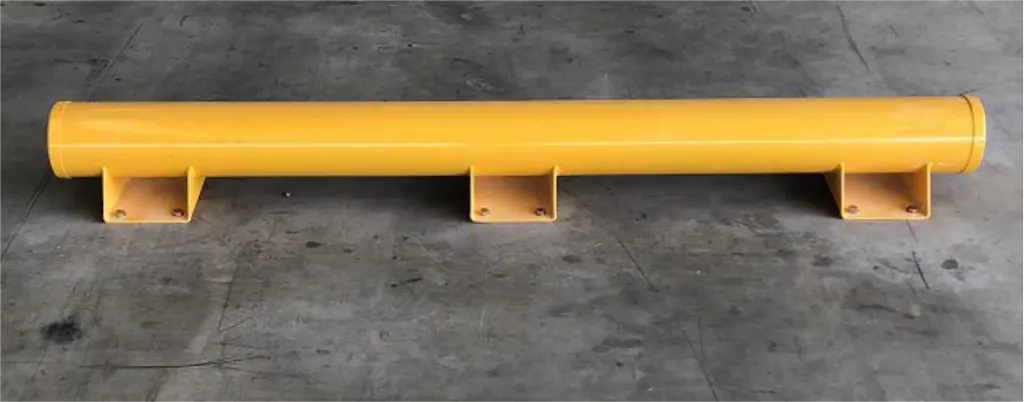
Plastic
For parking garages, heavy-duty wall protection is crucial. While plastic bumpers may be less common, they offer lightweight and easy installation advantages, making them ideal for small parking garages. Despite being relatively inexpensive, they may not be as durable as other materials like rubber or Plastic-Rubber composite.
However, high-quality PVC plastic and aftermarket finishes can prevent scratches and cracks in harsh weather. Quality control is essential when choosing parking lot bumpers, so choose a product that meets your specific needs and provides a durable, long-lasting solution.
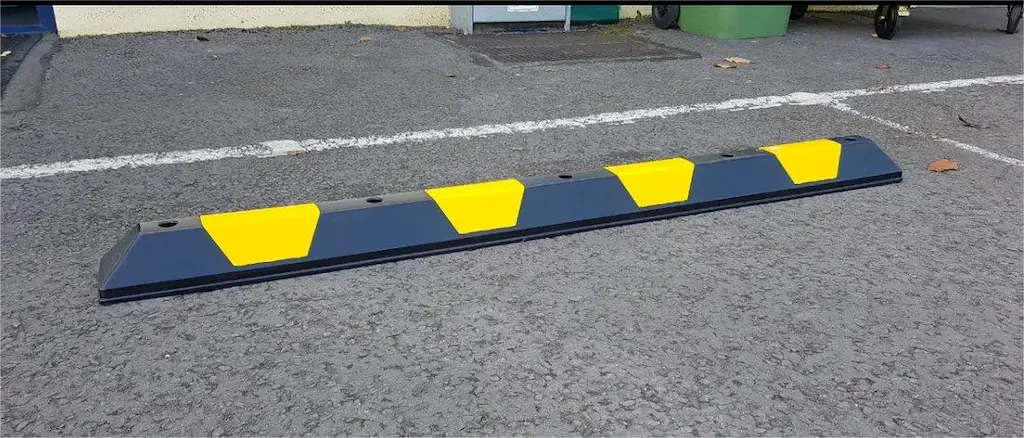
Comparing the Durability of Different Materials for Parking Blocks
Regarding parking in specific spots, using textures and scratch-resistant materials, such as rubber, and Plastic-Rubber composite can prevent car scratches.
Rubber and Plastic-Rubber composite parking lot bumpers are the best options as they are long-lasting, reliable, and affordable. They are also resistant to weather and chemicals and can withstand heavy use without showing signs of wear and tear.
These materials are also excellent for indoor parking as they have a non-slip texture to ensure the safety of both drivers and pedestrians.
Concrete and cement parking bumpers may also work well in some situations, but they are prone to cracking and chipping in extreme weather conditions and require regular maintenance. Steel parking lot bumpers are strong but may rust and corrode over time. Plastic parking bumpers are less durable and prone to cracking and breaking in extreme weather conditions.
Regarding cost, concrete, and Plastic-Rubber composite parking stops are generally more affordable than rubber parking bumpers. Plastic bumpers are generally the cheapest option but are also the least durable.
Ultimately, the best material for parking lot bumpers will depend on the specific needs and conditions of the parking lot. Rubber and Plastic-Rubber composite wheel stops are versatile and cost-effective options that meet most parking lots’ needs.
Conclusion
In conclusion, the best material for parking lot bumpers depends on several factors: durability, maintenance, and cost.
Rubber and Plastic-Rubber composite parking lot bumpers are easy to maintain and cost-effective options, but concrete and cement can be used for those who prefer a more traditional look. Steel bumpers are also an option, but they may rust and corrode over time. Plastic bumpers are the least durable and cost-effective but lightweight and easy to install.
For further information, feel free to check the following pages:
hello@parkingblockdirect.com
